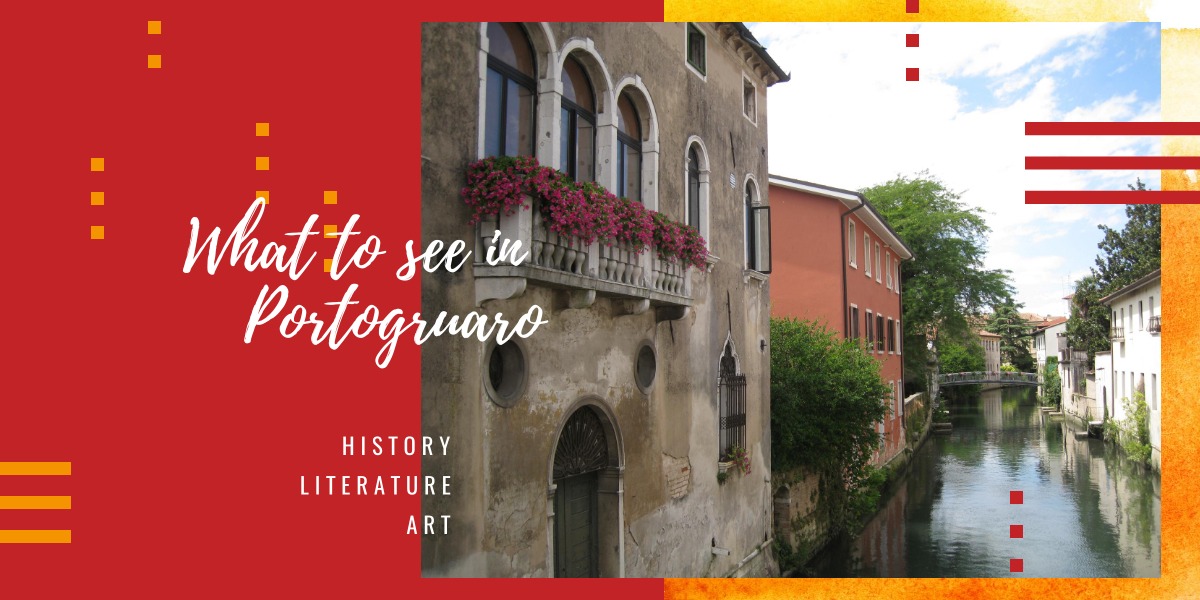What to see in Portogruaro: amidst history, literature and art
Come with Venice box to discover Portogruaro, a journey through history, literature and art in search of the beauty and curiosities of this city.
Portogruaro, a Venice on dry land
Just over a hundred kilometres from Venice, along the banks of the River Lemene, lies Portogruaro. Its mediaeval town centre is home to palaces whose style is reminiscent of Gothic, Venetian and Renaissance influences. The buildings are evocative of Venice, a resemblance highlighted by many writers such as Carlo Sgorlon (1930-2009) who describes it as
“the queen of Lemene… In it you can clearly breathe a Venetian air, if not altogether Venetian“.
and Ippolito Nievo (1831-1861), who in his work “Le confessioni d’un italiano” (Confessions of an Italian), gives us a cross-section of Portogruaro that still clearly evokes the atmosphere of the town today:
“The large, spacious houses, with three large central windows, were lined up on both sides of the city quarters, so that only the water was missing to complete the resemblance to Venice.“
A stroll through history and literature
Let Nievo again guide us in our discovery of Portogruaro through his novel, where we encounter the fourteenth-century town hall (which in the sixteenth century was given two Gothic-style side wings with Ghibelline swallow-tailed battlements), the Piazzetta della Peschiera (where the ancient port on the River Lemene used to be) and the seventeenth-century Oratory of the Madonna built by the fishermen of Caorle. A short distance from the oratory, following the river bank, we reach the Ponte di Sant’Andrea with its granaries and ancient mills that offer an enchanting view.
A Risorgimento drawing room: Villa Comunale
Crossing the bridge we come to Villa Comunale, transferred to the municipality in 1973, but originally designed by Guglielmo de Grigis da Alzano (1480-1550) at the behest of the Frattina nobles and built in the mid-sixteenth century. Over the centuries the building has been home to various owners such as the Tasca family, who in 1682 decided to build the Oratory of Sant’Ignazio near the villa, and the Venetian nobles Persico-Albrizzi. In the nineteenth century the latter made the villa the centre of Portogruaro’s cultural life, welcoming among the leading figures of the nobility and culture of the time the young Ippolito Nievo.
A living centre of culture
Remaining in the cultural sphere, Portogruaro was the birthplace of the futurist artist Luigi Russolo (1885-1947), whose many works, include the famous painting Automobile in corsa (1912-1913), now at the Centre Pompidou in Paris.
Today, the Venetian city’s theatre is named after the artist and there is also a permanent gallery in the Palazzo Altan Venanzio.
In the artistic context, it should also be remembered that Portogruaro can boast the presence of the first museum set up in Veneto after the unification of Italy and one of the oldest on the peninsula: the Museo Nazionale Concordiese (National Museum of Concordia), created to house the finds from the ancient colony Iulia Concordia and the surrounding areas.
Not only the visual arts, but also music are at home in Portogruaro, where Lorenzo da Ponte (1749-1838) stayed. He is also famous for being Mozart’s librettist for The Marriage of Figaro (1786), Don Giovanni (1787) and Così fan tutte (1790).
Every year between August and September the city hosts the International Festival of Chamber Music, where musical performances are staged in the most beautiful and evocative locations in Portogruaro.
Discover more wonderful places to visit in Veneto in the Around Venice section of our blog.




